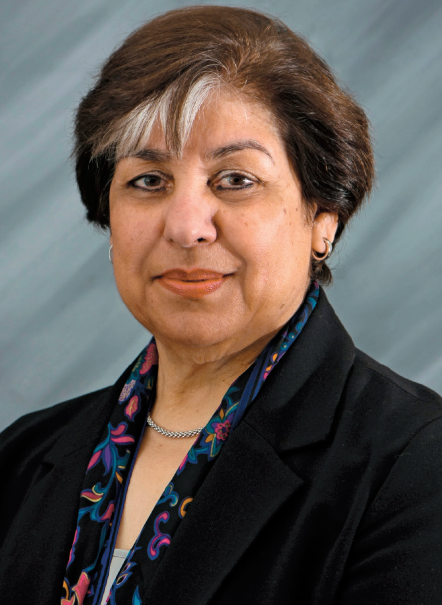Clinical Trial Evolution: A CRO’s Perspective
Leader of one longtime CRO discusses the marked changes in clinical trial practice from past to present-and the company’s unique focus.
Devinder Poonian, CEO of Rockville, MDbased CRO DP Clinical, discusses changes in clinical trial practice over the years, and the company’s experiences with complex spinal cord injury trials.
Q: Your CRO has been in business over 24 years. What specific changes have you seen in the industry?
Devinder Poonian

POONIAN: A great deal has changed in the CRO/drug development industry over the last 24 years. Patient participation as a result of greater awareness through advocacy groups and social media have had a significant impact on how patient recruitment is handled. We are now able to identify potential trial participants so much easier than before, and with difficult-to-enroll patient populations, this is extremely important.
Technology changes have also had a significant impact on the industry. Whether you look at how data management was handled in the past (paper case report forms, or CRFs) and the move to electronic data capture or the use of other trials tools-clinical trial management systems (CTMS) and electronic master file (eTMF) systems, there is no doubt that we have come a long way in how we conduct clinical trials. Other industry changes include product licensing, mergers and acquisitions of both pharma and CROs, as well as the development of creative approaches to the financial challenges of many startup companies pursuing new therapies.
Q: What specific changes have there been to clinical trials?
POONIAN: Technology has had the biggest impact on clinical trials. When DP Clinical started, data was captured on paper CRFs, monitored onsite, collected, and brought or shipped back to the CRO for data entry into the study database. Today, everything is electronic-EDC systems, remote and onsite monitoring, and almost real-time access to data. All this provides sponsors with the information they need to make informed decisions regarding their studies quickly, ultimately minimizing risk and reducing cost.
Q: As a small CRO, how do you respond to the big CRO/big pharma, little CRO/little pharma discussion?
POONIAN: To some extent, I agree. We have found that small pharmaceutical companies and biotechs have needs that can’t typically be met by large CROs. Small/mid-sized CROs have much more flexibility to meet sponsor requests and can adapt quickly to their ever- changing requirements.
Having said that, we work well with large pharma also. They appreciate our focus, experience, and reputation; and they know we can deliver. At DP Clinical, we have successfully managed studies for all types/sizes of companies. We develop true partnerships with our sponsors and offer the personal attention they often don’t get with larger CROs.
We’ve found that the CRO’s experience, knowledge of the therapeutic area, quality of work, and reputation are more important than the size of the CRO or pharma. Finding a partner that you trust, is knowledgeable in the type of study to be conducted, and has a reputation for delivering are key.
Q: How did you get involved with spinal cord injury trials?
POONIAN: I started my clinical career with Fidia Pharmaceuticals, which specialized in products for neurological disorders. There I initiated the first acute spinal cord Injury (SCI) study at 32 neurotrauma centers in North America. I then went on to start DP Clinical, which combines a strong neurology/CNS research heritage with over 24 years of experience in conducting acute
and chronic SCI clinical trials. Since 1994, we have worked on almost all of the major acute and chronic SCI studies conducted, starting with the benchmark study of Sygen® (GM1)-considered the gold standard in SCI treatment-as well as studies using autologous cells, stem cells, and devices.
Q: How difficult are these trials to conduct? What is involved?
POONIAN: Because of the small potential market size, large pharmaceutical companies have not invested in SCI research; however, small pharmaceutical and biotech companies have displayed an increased interest in SCI clinical trials, and it’s a good fit for them.
SCI studies are very difficult, because they have an added level of complexity-sites must wait for someone to experience a life-altering event. It’s traumatic, literally, for the patient; and study sites must wait for an event to occur as opposed to actively seeking patients. With improvements in car safety (airbags and seatbelts), fewer people are injured in car accidents, thus reducing the number of SCI patients each year.
Potential patients are often treated at a hospital and would have to be transferred to a study site. This typically cannot be done within the study timeline which often require therapies to be administered within a few hours or days of the SCI. Additionally, many acute SCI patients are seen at Level II trauma centers and are not transferred to Level I centers where studies are actively enrolling. As a result, enrollment takes longer than some clinical trials and must be managed carefully by the CRO.
Finding the right trauma centers, with experienced staff able to conduct the necessary assessments is critical. Because there is variability among study sites and assessors, additional training must be provided to ensure consistency. CRO oversight is very important to these studies to maintain assessment and data accuracy. We have worked with numerous centers to train and support them in patient enrollment.
Many companies interested in conducting SCI research are small and funding can be difficult, because SCI studies are costly. To meet enrollment requirements, especially for larger SCI clinical trials, it may take several years to recruit and enroll the needed number of SCI patients needed. So, long-term funding becomes an important element in SCI trials. To date, there have been no FDA approved treatments for SCI and only a few trials have shown patient improvement.

Behind the Buzz: Why Clinical Research Leaders Flock to SCOPE Summit
February 7th 2025In this episode, we meet with Micah Lieberman, Executive Conference Director for SCOPE Summit (Summit for Clinical Ops Executives) at Cambridge Innovation Institute. We will dive deep into the critical role of collaboration within the clinical research ecosystem. How do we bring together diverse stakeholders—sponsors, CROs, clinical trial tech innovators, suppliers, patients, sites, advocacy organizations, investors, and non-profits—to share best practices in trial design, program planning, innovation, and clinical operations? We’ll explore why it’s vital for thought leaders to step beyond their own organizations and learn from others, exchanging ideas that drive advancements in clinical research. Additionally, we’ll discuss the pivotal role of scientific conferences like SCOPE Summit in fostering these essential connections and collaborations, helping shape the future of clinical trials. Join us as we uncover how collective wisdom and cross-industry partnerships are transforming the landscape of clinical research.
Phase III Trial Data Show Subcutaneous Pembrolizumab as Noninferior to IV Keytruda
March 31st 2025Subcutaneous administration of pembrolizumab with chemotherapy demonstrated a nearly 50% reduction in patient chair and treatment room time while maintaining efficacy and safety endpoints compared to intravenous Keytruda.
Reaching Diverse Patient Populations With Personalized Treatment Methods
January 20th 2025Daejin Abidoye, head of solid tumors, oncology development, AbbVie, discusses a number of topics around diversity in clinical research including industry’s greatest challenges in reaching diverse patient populations, personalized treatment methods, recruitment strategies, and more.